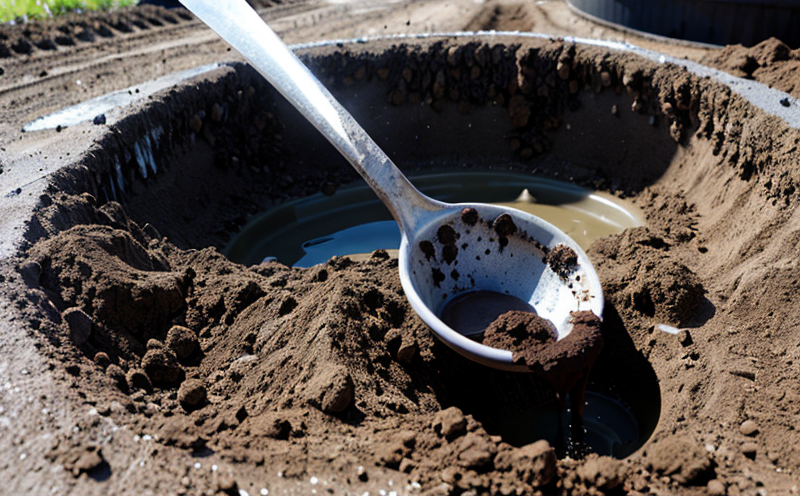ASTM D2974 Moisture Content and Organic Matter in Sludge Test
The ASTM D2974 standard method is a cornerstone in the analysis of moisture content and organic matter in sludge, biosolids, and other solid waste materials. This test plays a critical role in ensuring compliance with regulatory standards for wastewater treatment facilities and land application programs.
Sludge and biosolids are by-products of the biological processes used to treat wastewater. They contain various organic compounds derived from domestic sewage, industrial wastes, and nutrients. Accurate determination of moisture content and organic matter is essential for proper handling, storage, and disposal of these materials. This test ensures that sludge is not only managed safely but also contributes effectively to nutrient recycling programs.
The ASTM D2974 method involves drying a known weight sample in an oven at a specified temperature (105°C ± 3°C) until it reaches a constant mass. The difference between the original and final weights represents the moisture content of the sludge. Organic matter is determined by subtracting the moisture content from the total solids content.
The test method is applicable to various types of sludge, including primary, secondary, and activated sludge. It provides reliable data for quality control purposes in wastewater treatment plants, helping operators make informed decisions about operational parameters such as aeration time and chemical dosages.
Compliance with ASTM D2974 ensures that the moisture content and organic matter percentages are within acceptable limits set by environmental regulations. This helps prevent potential issues like odors, pathogens, or fires associated with improperly managed sludge. The test also supports nutrient management programs by providing accurate data on available nitrogen and phosphorus content.
Accurate determination of these parameters is essential for proper handling, storage, and disposal of sludge. It ensures that the material can be safely transported and applied to agricultural lands or used as a fertilizer supplement without causing environmental harm.
| Sample Type | Moisture Content Range (%) | Total Solids Content (%) | Organic Matter (% of Total Solids) |
|---|---|---|---|
| Primary Sludge | 60-75 | 25-40 | 18-36 |
| Secondary Sludge | 50-60 | 40-55 | 32-45 |
| Activated Sludge | 45-55 | 55-65 | 40-50 |
Understanding the moisture content and organic matter composition of sludge is crucial for optimizing treatment processes, ensuring compliance with environmental regulations, and maximizing the value of biosolids as a resource.
Benefits
- Achieves accurate measurement of moisture content and organic matter in sludge.
- Safeguards against potential hazards like odors, pathogens, or fires.
- Supports nutrient management programs by providing reliable data on available nutrients.
- Promotes compliance with environmental regulations governing waste management.
- Enhances operational efficiency in wastewater treatment facilities.
- Reduces the volume of sludge through effective dewatering processes.
- Facilitates proper disposal and recycling options for sludge materials.
Industry Applications
Wastewater Treatment Facilities: Ensures consistent quality control in the treatment process.
Biosolids Management Programs: Supports nutrient management and recycling initiatives.
Agricultural Land Application: Guarantees safe application of biosolids without environmental harm.
| Industry Segment | Application |
|---|---|
| Water and Wastewater | Quality control in treatment processes, nutrient management programs. |
| Biosolids Management | Safe application of biosolids to agricultural lands. |
| Agriculture | Nutrient recycling and soil enhancement. |
Environmental and Sustainability Contributions
Reduces greenhouse gas emissions by enabling the proper management of sludge.
Promotes nutrient cycling, contributing to sustainable agriculture practices.
Supports zero-waste initiatives by providing data for efficient resource recovery.
Aids in the development of closed-loop systems within wastewater treatment facilities.
Facilitates the reduction of sludge volume through effective dewatering processes.





